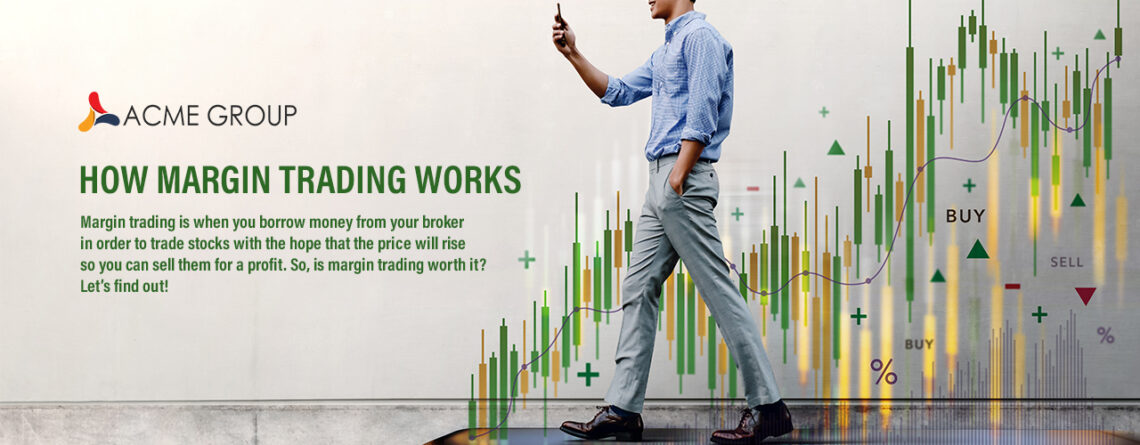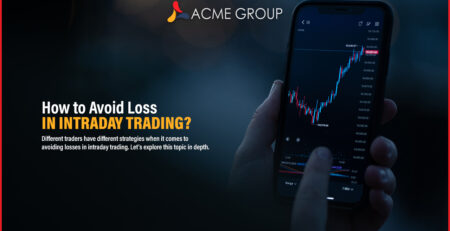Margin trading is when you borrow money from your broker in order to trade stocks with the hope that the price will rise so you can sell them for a profit. So, is margin trading worth it? Let’s find out
How Does Margin Trading Work?
Trading is often thought of as a risky investment, but margin trading is an option that is worth considering. Margin trading is when you borrow money from your broker in order to trade stocks with the hope that the price will rise so you can sell them for a profit. When it comes to how margin trading works, there are some things to keep in mind before deciding if it is right for your portfolio or not. So, is margin trading a good idea? This is up to you and depends on your goals and risk tolerance levels.
If you have enough cash in reserve, then this may be something worth considering because it leverages the power of compounding interest. Just remember that when investing with borrowed funds, there are always some risks involved. It is a form of investment that is not typically used by the average person. It is reserved for those who are financial professionals or have significant assets to invest in.
This is because margin trading can be risky, and it is easy to lose your money without understanding how it works. In this blog post, we will discuss how margin trading works so you can make an informed decision about whether or not this type of investing is right for you!
The Main Terms of Margin Trading
Before you enter the world of margin trading, there are some terminologies that you need to be aware of.
- Leverage: Leverage refers to borrowing money when making investments instead of using just your original investment. It is how much money you borrowed from the stock exchange. It is used to buy an asset with the hope that its value will go up.
- Maintenance Margin Requirement: The percentage of assets that must be kept in reserve after each transaction is done, and if there is a dip below this number, then the trade needs to be reversed immediately, or else further losses may occur.
- Margin Balance: This is your account balance that is determined by assets and financial instruments you own, minus any debt or margin maintenance fees (typically ten percent). The initial payment is also subtracted from the overall value. This is what determines how much capital can be utilized for trading purposes.
- Initial Margin: This is the money that you need to put up in order to open a margin trading account. It is usually twenty percent of what is required for each transaction but can vary depending on how risky it is and how much your assets are worth.
- Margin Call: If there is not enough capital left after completing trades, then this will automatically occur, forcing more cash or assets into your account until all costs have been covered (maintenance fees included).
- Margin Call Deadline: A date certain after which the brokerage claims any remaining assets in your account that meet their specific criteria, including trades executed during normal market hours, outstanding orders submitted through the night session, but excluding orders executed during after-hours.
- Isolated Margin: The amount that is required to be kept in reserve after each transaction is completed. It is the percentage of margin balance separate from securities and financial instruments you own, minus any debt or maintenance fees (typically ten percent).
- Cross Margin: This is what happens if you do not have enough cash or assets left after completing trades and your account value dips below the required maintenance fee level. If this occurs, then all of your positions will automatically be closed by a brokerage house in order to protect itself from further loss. When it comes time for a new trade, you may need to deposit more funds into your account as well as meet minimum requirements set out by financial regulations in addition to those imposed by brokers themselves, so they know how much risk is being undertaken with each trade.
- Settlement Date: Also known as T+0 or trade date plus zero days, this is when payment for stocks bought through CFDs must be made.
- Order Cost: The cost of placing an order is the commission that the broker charges to trade, not including any other fees or taxes.
- Limit Order: A limit buy is where you enter into a contract with your brokerage house to purchase shares at no more than their stated price level during regular business hours until they have been filled by another trader on either side of this agreement (selling party).
Pros and Cons of Margin Trading
The Pros
- You can make more money than with traditional stock trading because you are borrowing the capital needed for investments. This is how most small business owners get started and is also how day traders operate.
- The price is lower when buying stocks on margin versus purchasing it outright with cash or assets alone (the fee is somewhere between five to ten percent of what is required per transaction). However, this amount may vary depending on your brokerage house as well as market conditions at any given time.
The Cons
It requires an initial investment that is higher than just using regular checking or savings accounts along with funds borrowed from financial institutions in order to cover fees associated with each trade completed (ten percent per transaction is common).
Reducing Margin Trading Risks
- Don’t invest more than you can lose
- Never invest with money you can’t afford to lose
- Use a stop-loss order
- Don’t focus on short-term trading and use the overall market trend as well as your own conservative strategy that is appropriate for your financial situation. This is how small business owners, retirees, and other experienced traders operate.
- Invest with your head
Final Thoughts
Margin trading is a good idea only for experienced traders and is mainly used by day traders. However, it is essential to know the risks involved before using this form of investing as well as how much money you can afford to lose beforehand. To start with margin trading, establish your risk tolerance, plan an exit strategy, and use stop-loss orders when necessary. This will help you protect your investments and reduce risk while still allowing for profitable trading. Keep one thing in mind, never trade more than is available so that after each transaction is completed, there is enough liquidity left over until all of them have been executed before making any further trades.












Leave a Reply